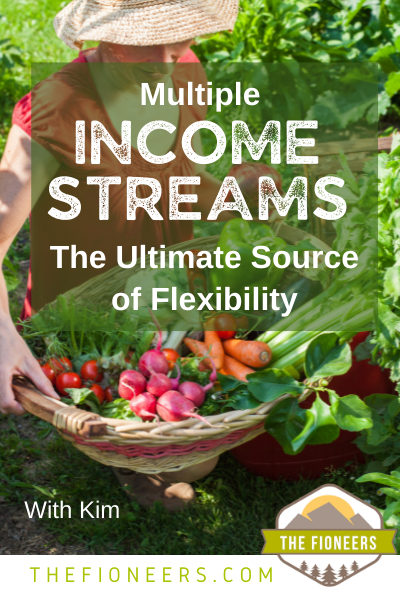

A few months ago, I reached out to the Slow FI Enthusiasts Facebook group. I asked people to raise their hands and share their stories if they’d built a life they didn’t want to retire from. I’m always seeking out these kinds of people because I knew I have a lot I can learn from them.
Kim was one of these people. She lives in Colorado on a farm and works part-time as a behavioral consultant with autistic children and their families.
Throughout her career, she’s built up a variety of income streams. Having different income streams gave her peace of mind because she was no longer reliant on one employer for her livelihood. It also provided her with tremendous flexibility over time.
Let’s get into the interview!
1. Tell me a little bit about you.
Hi! I’m Kim. I’m in my early 40’s. I am passionate about travel, entrepreneurship, nature, food security, and sustainable living. My husband and I have made Colorado our home after having spent most of our lives on Long Island, NY.
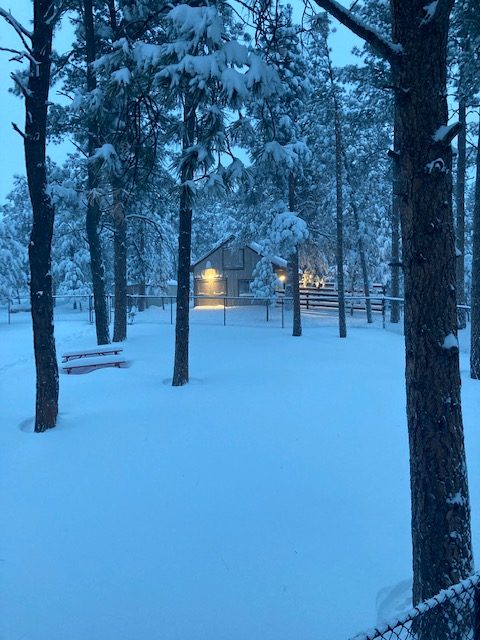

We live on five acres of ponderosa pine forest with our two dogs, pet goats and sheep, and a few chickens. Our large garden, indoor mushroom farm, and laying hens provide us with most of our food year-round. We have also been developing our garlic crop over the last four years to allow for commercial production.
My career background is working as a behavioral consultant for autistic children and their families which I’ve done for twenty years. About ten years ago, I started a private practice that grew into a pediatric therapy clinic that employed ten full-time staff. My work felt very stressful, and I made the decision to sell my company in 2019 so that I could begin a more work flexible lifestyle. My husband, who worked in the business with me, is a special education teacher and now has a flexible schedule as a substitute teacher while we grow our farm business.
We are interested in all things homesteading or self-sufficiency. In the past, we spent time volunteering on different farms throughout the US and Canada through an organization called WWOOF (Worldwide Workers on Organic Farms) and were able to gain farm experience while also traveling for free! Our farm is high altitude and has a very short and unpredictable growing season. But we have learned to thrive here.
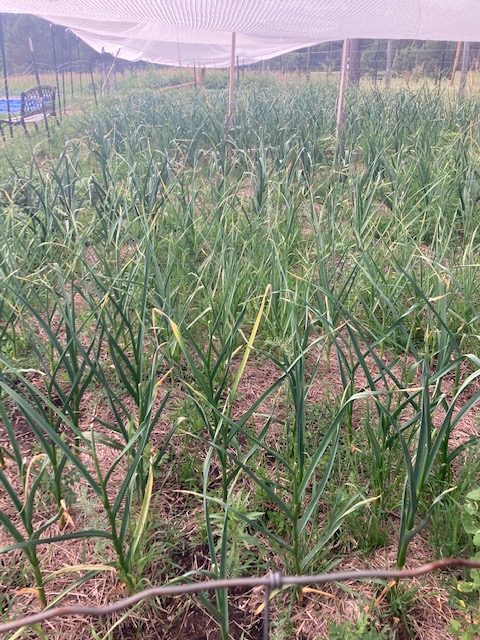

We now grow and preserve most of our own produce for year-round use. Next year, we anticipate reaching one of our milestones of having 10,000 bulbs of hardneck and elephant garlic varieties. We will begin to sell these commercially the following year when we hit 50,000. We are hoping that garlic will become our main source of income and we plan to supplement that with classes and events, farm-to-table dinners, plant starts, and produce and product sales.
2. What does your life currently look like? Why did you decide to design your life in this way?
My lifestyle is relaxed, passion-driven, and work-flexible. My days consist of taking care of our animals and gardens and working part-time as a behavioral consultant. I decided to work for a local company instead of returning to private practice because my schedule is flexible and I enjoy being part of a team. I also like having the freedom to be able to walk away from my job at any time (exiting my business was a two-year process!)
I prioritize self-care, which was something I had neglected for many years as a business owner. This includes preparing healthy home-grown meals, exercise, coffee and tea breaks, reading, and meditation. During our short growing season, we are extremely busy with planting, hand-watering, weeding, harvesting, preserving, and other various farm projects. It’s a full-time job for at least one of us during the growing season. During the cold months, we have a lot more free time!
Early in my career, I learned an important lesson that led me down a new path. I had a supervisor who I butt heads with and despite being good at my job, putting in 50+ hour weeks, and my clients being happy with my work, I was still let go.
I was devastated.
This experience taught me that employees are dispensable and that having multiple streams of income is necessary for financial security. The loss of a primary source of income can be financially crippling for many and it was a terrifying experience to go through.
I used my job loss as an opportunity to start my own consulting business. I figured that there was more safety in having multiple streams of income from my various clients than there would be with having only one employer.
I didn’t have any savings at the time but used credit cards and unemployment income to help finance my transition into becoming a full-time entrepreneur. I started working as an independent contractor and soon exceeded my previous income while working fewer hours. As I built my business, I began taking on my own clients and then employing others.
I’m entrepreneurially motivated and have had side businesses as a way of generating more income. Pre-covid, I used to teach chunky blanket-making classes at an art studio that were very popular and earned me a few hundred dollars a class doing something I enjoyed. I also had an Etsy store selling print-on-demand mugs. My husband and I even had a sushi stand called Roll-Some at one point! Not every business was financially successful, but I enjoyed them. Right now, I have a small business consulting practice and am also working on digital products to sell on my website.
I love having multiple streams of income and together they add up. I get bored easily and enjoy having lots of different projects to work on to keep me interested.
Throughout my career, I also had the opportunity to take several work breaks. I learned some valuable things about myself during those times including the fact that I don’t value my free time as much when I have unlimited amounts of it. I actually become very bored with long stretches of free time and do better with some structure during my week.
I like having a balance between work that I enjoy that brings value to others and free time. I don’t care as much as I used to about making as much money as I can. It’s more important that my work feels meaningful and that it also supports my lifestyle.
I also learned that not having a job didn’t miraculously cause all of my problems to disappear. When I didn’t enjoy my work, I had a habit of blaming everything that I viewed as wrong in my life on my job. When my job was gone, the bad habits and character traits didn’t magically disappear. When we’re unhappy in a situation, we just want to escape and our perceptions aren’t the most accurate. In the past, I would push myself to work as hard as I could no matter how unhappy and unhealthy I was because I wanted to reach our goal and ‘be FI’.
I’m thankful for having the opportunity to slow down, take time off, and discover slow FI because it showed me that there was no real reason to put myself through such mental and physical stress in a race to FI. Life is happening right now. Working 10-15 hours a week doing a job I enjoy for the next ten years or so isn’t a burden at all.
3. Now that you have more flexibility, how has that impacted your quality of life?
Even if you aren’t at your FI number, financial security is a game-changer. It gives you options and the upper hand in nearly every situation. I was able to walk away from a comfortable 4-day/week remote position simply because I stopped enjoying it and didn’t feel fulfilled. I felt like I was showing up each day for a paycheck and not doing any work of value. It was time to move on, so I did.
Now that I’m older and have acquired a certain level of financial security, my time has become more valuable than money. I say “no” more to additional responsibilities. I am not fearful of advocating for myself and speaking up to my boss because I feel like I can and have nothing to lose. This is quite the opposite of where I first started when I was trying to aggressively build wealth by working as much as I could.
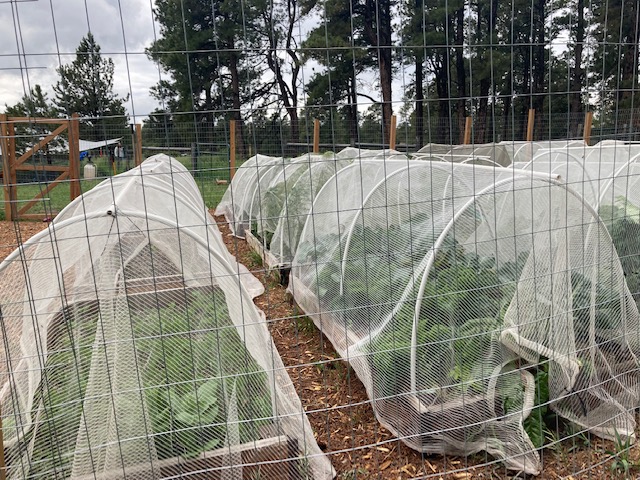

Money is no longer my primary objective. Because I can choose more how I spend my time, I focus on my hobbies and passions which are travel, being outdoors in the garden, foraging for edible mushrooms and plants, reading, attending conferences or classes on any one of my varied interests, meditating, listening to podcasts, roasting coffee, learning to make sourdough bread, chicken keeping, thrifting, making my own clothes, and all things homestead or DIY.
4. In your opinion, what things in your life contribute most to your happiness and contentment?
For me, happiness and contentment stem from having the freedom to spend my time and energy the way that I want. This includes doing work that I’m passionate about that is valuable to others and having the time and resources to pursue my interests. It also helps that I live in a forest and a beautiful place that brings me joy each day!
I think being optimistic and looking for opportunities contribute to my happiness and contentment. I grew up in a family that was extremely negative, and I internalized a lot of those views from an early age. My parents never thought wealth was something attainable for people like us, so they made financial decisions that supported their point of view.
As I grew older, I decided to start changing my habits and thought patterns. I realized that I had more agency than I thought. My mindset and choices shaped the direction that I wanted my life to take. I had previously felt as if life was something that happened to me and not something I was directly in control of. I believe that thoughts lead to behavior. Someone with a negative outlook will tend to view challenges or hardships as a confirmation of their failure and someone with a positive outlook will see challenges as growth and learning opportunities.
5. How has your decision to take advantage of lifestyle flexibility impacted your financial goals or timelines?
We are still on track to retire early within the next 10 years, even if we never contribute another dime to our investments. This means that we only need to work to cover our annual living expenses, which can be adjustable to a certain extent since we have no debt or mortgage and produce a lot of our own food.
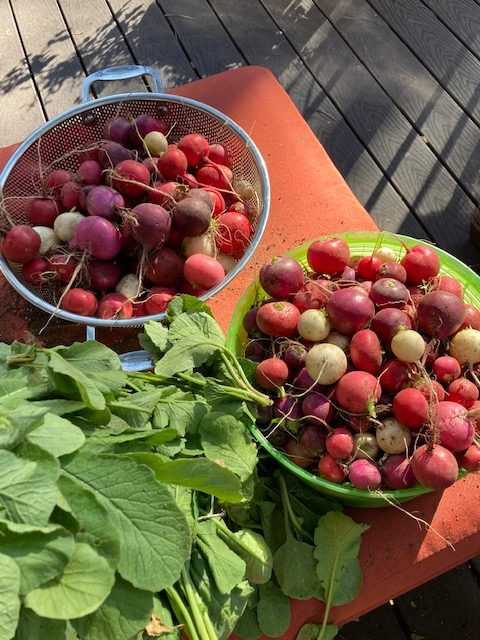

Since we both enjoy our jobs currently, we always have the option of contributing more to speed up the FI timeline. We’re in our homesteading phase right now, but once we fully retire–we would like to live overseas, travel freely, and spread our budget by living in low cost of living countries.
6. What enabled you to design such a flexible lifestyle?
I think it’s a combination of being financially fortunate and also having made good financial decisions.
We have always been a two-income household. Choosing not to have children really helped, as did building a business from the ground up and being able to sell it for its value.
We both graduated from college with little to no debt (I only had to take out a loan for one year of grad school). We are also both naturally frugal and have made decisions that others might consider sacrifices. Both my husband and I lived with our parents until we were well into our 20s. After we were married, we lived in some pretty horrible rental situations just to save money. I still drive the first car I purchased for myself in 2010 and my husband’s vehicle is 18 years old. We bought our first and only home when we were in our mid-30s.
I cut my own hair and have decided to let the gray grow out naturally. I wear second-hand clothes and grow or produce a lot of what we need. We have never owned fancy watches, a big-screen TV, the latest iPhone, or a lot of the things that some people consider necessities. As far as material objects go, we are the envy of no one…and outwardly we probably appear pretty poor.
Intentionally not spending money on things we don’t value allows us to splurge on things we do, such as travel (mainly using reward points) and events like concerts, shows, classes, and equipment for hobbies. Aside from that, we’re both pretty simple and are happy living simply and close to nature.
7. Were there things in your life you adapted so you could continue to work toward your goals?
I think we’re very adaptable and always try to make the best of whatever situation we’re in.
I had every intention of staying in my remote position for the long term. But, plans changed when I was no longer happy there. My husband went back to work full-time as a permanent substitute while I stayed home and focused on the farm. Now that his job is ending for the summer, I started a part-time job, and then he will work full-time on the farm. Maybe we will switch things up again in the fall.
8. Why and when do you think someone might consider “downshifting?”
I would recommend downshifting as soon as you are financially able to! Or, at least take an extended work break. When you take time away from work, you can actually observe how you spend your free time and it may be very different than how you imagined it!
I found that my dream of unlimited free time and all the things I would be doing with it was very different from the reality of it. I’m glad that I had the opportunity to discover that having a balanced lifestyle was much more ideal for me than pushing myself to burnout just to reach my destination a few years sooner.
9. What advice do you have for someone considering a similar decision?
I encourage everyone to create a life that allows for multiple streams of income. Be flexible with your financial plan. A career that makes you happy at one point in your life may not provide the same fulfillment later on. Your financial goals may change, and you may be less inclined to want to work 50+ hours a week. Your health may change. Your partner may change. There are so many variables that even the best financial plan may not work out as expected. Plan for the future and where you want to be, but always remain flexible.
Thank you so much, Kim, for sharing your story with us!
I want to touch on two important things from this interview.
Let’s talk first about the flexibility and peace of mind that can come from having multiple income streams. Most people assume that having a traditional (W2) job is the safest path. In actuality, that often means that you are putting all of your eggs in one basket. If you lose that job, you could lose your entire livelihood.
When Kim was let go of a job in her 20s, she knew that she never wanted to be in a position where she was reliant on a single stream of income ever again. It would be a lot safer to have multiple streams of income, she decided.
Since then, she has worked as a contractor, built up her own business (and eventually sold it), worked in part-time jobs, taught craft classes, ran an Etsy business, and even had a sushi business. Now, she’s working on getting her farm to a place where it will help generate income (in addition to reducing their costs by growing most of their own food). Over the next couple of years, they will be selling their garlic crop commercially and could generate income through sales of other produce and products or hosting dinners or other events.
Second, I love Kim’s advice about taking a career break. I agree that we don’t know how we’ll feel about having 100% free time until we’ve actually tried it. We might not actually love it as much as we think. Kim found that she didn’t actually value her free time as much when it was unlimited. She also found that she enjoyed work (particularly when she could work on her own terms).
I had a similar experience. When I took six months off in 2018, I realized that I actually enjoyed work (as long as it was on my own terms). I didn’t need 100% free time to live my ideal lifestyle, so there was no need to reach FI as quickly as possible.
If you’d like to learn more about Kim’s journey, you can find her on Instagram at @cherryblossom_forestdweller.
























